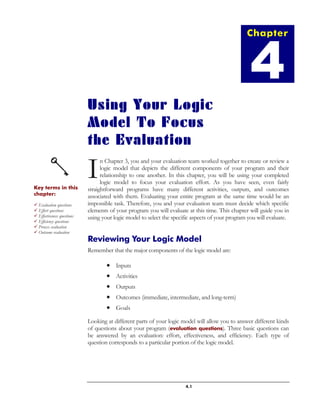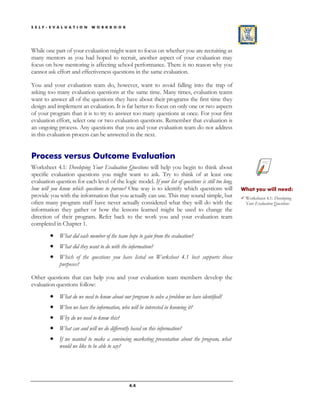This chapter focuses on using a logic model to direct evaluations of program components, emphasizing the identification of specific effort, effectiveness, and efficiency questions rather than trying to assess the entire program at once. It stresses the importance of designing evaluations around measurable outcomes instead of broad goals and promotes the integration of both process and outcome evaluations. The chapter concludes with a reminder to prioritize questions that will yield actionable insights for program improvement.




